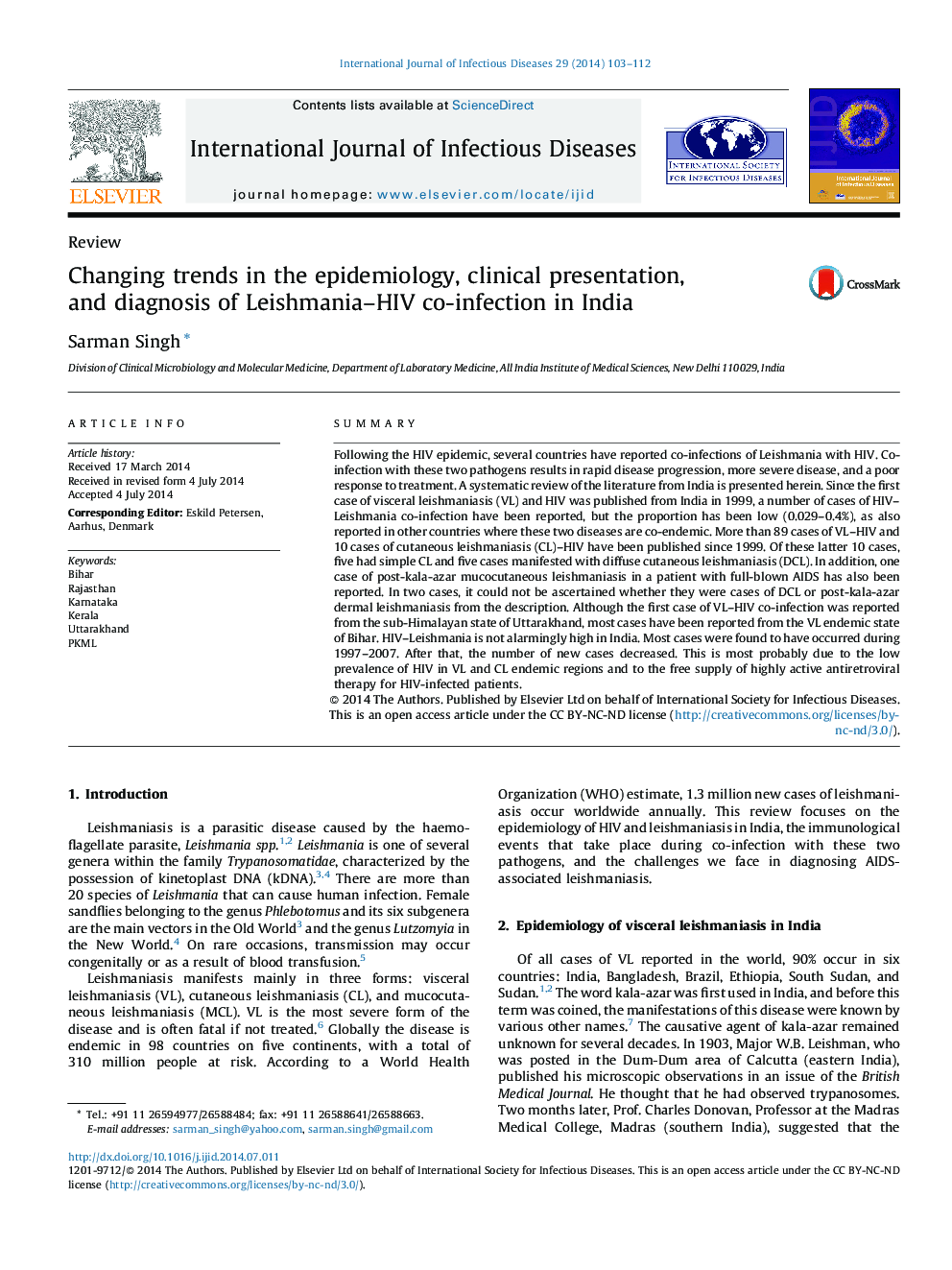| کد مقاله | کد نشریه | سال انتشار | مقاله انگلیسی | نسخه تمام متن |
|---|---|---|---|---|
| 3362316 | 1592066 | 2014 | 10 صفحه PDF | دانلود رایگان |

• Leishmania infections in HIV positive patients have increasingly been reported in last 25 years, mostly from Mediterranean region.
• Both infectious agents cause host immune suppression in a synergistic manner leading to faster disease progression and atypical manifestations.
• So far at least 102 cases of HIV-Leishmania co-infections have been reported from India with different clinical manifestations (VL 89; CL 10; PKML 1; undefined 2), but after HAART therapy number of new cases has come down.
• In HIV-VL co-infected patients, though immunological methods are most commonly used with high diagnostic accuracy, their analytical sensitivity remains low and end point antibody titers are several folds lower in HIV infected VL patients.
• Molecular methods have been found most promising diagnostic tool for both visceral and tegumentary leishmaniasis with several advantages, such as extremely high sensitivity, rapidity and the ability to work with a broad range of clinical specimens and these can predict therapeutic efficacy of specific drugs, disease outcome, relapses and species, strain or genotype identification.
SummaryFollowing the HIV epidemic, several countries have reported co-infections of Leishmania with HIV. Co-infection with these two pathogens results in rapid disease progression, more severe disease, and a poor response to treatment. A systematic review of the literature from India is presented herein. Since the first case of visceral leishmaniasis (VL) and HIV was published from India in 1999, a number of cases of HIV–Leishmania co-infection have been reported, but the proportion has been low (0.029–0.4%), as also reported in other countries where these two diseases are co-endemic. More than 89 cases of VL–HIV and 10 cases of cutaneous leishmaniasis (CL)–HIV have been published since 1999. Of these latter 10 cases, five had simple CL and five cases manifested with diffuse cutaneous leishmaniasis (DCL). In addition, one case of post-kala-azar mucocutaneous leishmaniasis in a patient with full-blown AIDS has also been reported. In two cases, it could not be ascertained whether they were cases of DCL or post-kala-azar dermal leishmaniasis from the description. Although the first case of VL–HIV co-infection was reported from the sub-Himalayan state of Uttarakhand, most cases have been reported from the VL endemic state of Bihar. HIV–Leishmania is not alarmingly high in India. Most cases were found to have occurred during 1997–2007. After that, the number of new cases decreased. This is most probably due to the low prevalence of HIV in VL and CL endemic regions and to the free supply of highly active antiretroviral therapy for HIV-infected patients.
Journal: International Journal of Infectious Diseases - Volume 29, December 2014, Pages 103–112